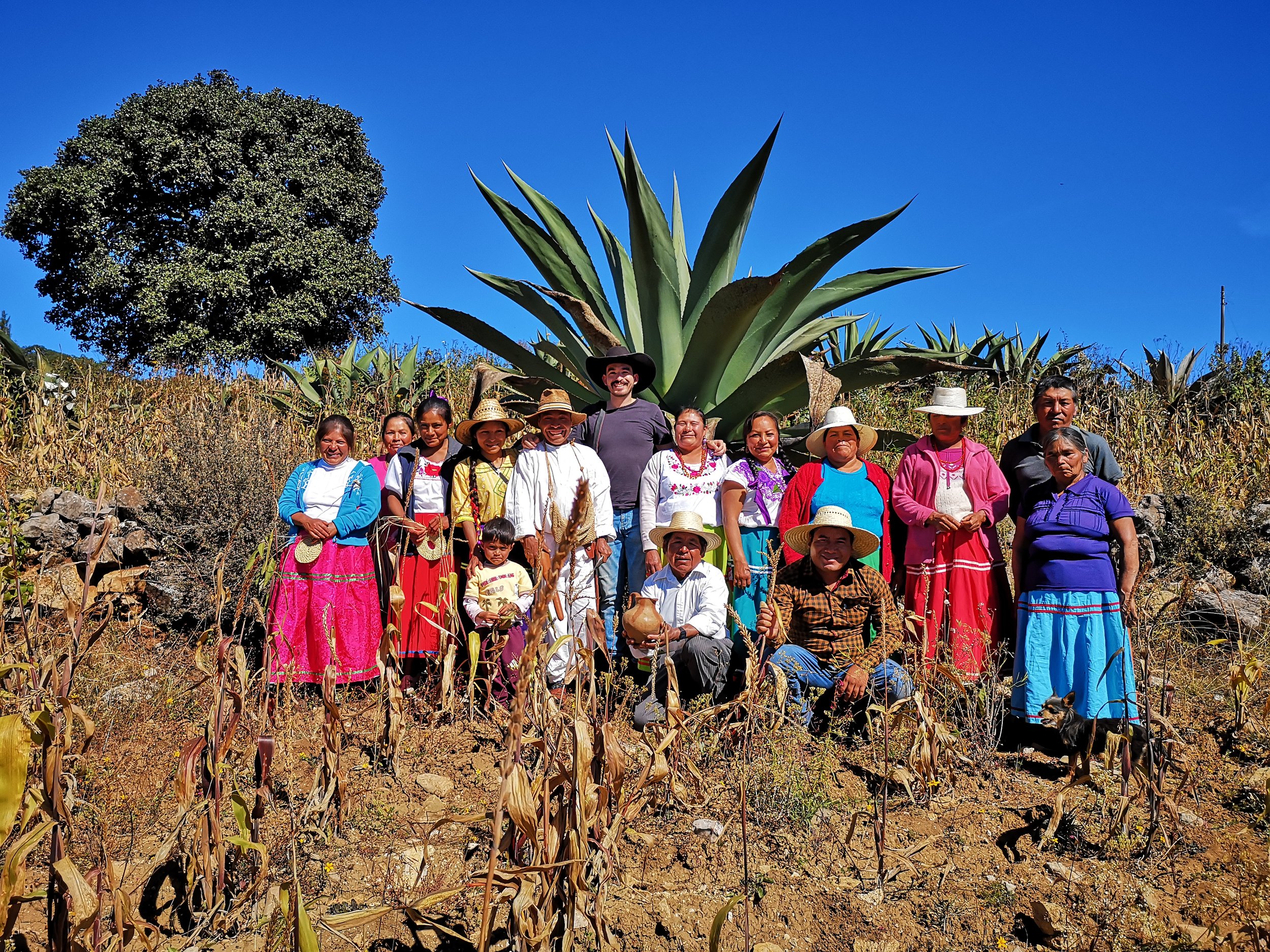Documenting 87 Traditional Drinks in Oaxaca Changed How I See Photography
How did Bebidas de Oaxaca begin?
At first glance, you might think I’m a chef, a food expert, or a documentary photographer. But when I started Bebidas de Oaxaca, I had no culinary background. I didn’t know anything about traditional Mexican drinks.
The idea came to me three months into living in Vancouver, Canada. I was missing Mexico deeply. Maybe it was the cold, grey winter. Maybe it was because I couldn’t work as a photographer, since I was there as a tourist. I’ve always believed that things happen for a reason, even if you don’t see it at first. Eventually, it makes sense.
At that time, I was living with an African family. My brother had recently joined me, looking for work opportunities. One afternoon in the kitchen, he made agua de mango (Fruit mango water). In Mexico, it’s common to use ripe fruit to make agua fresca instead of letting it go to waste. The family had never tried mango water like that, so simple, fresh, and full of flavour. They loved it. That moment led to a long conversation about all the traditional drinks we have in Mexico: agua de sandía, jamaica, horchata, melón, papaya, avena, and more.
By then, I already knew I wanted to return to Mexico, but I didn’t know how or what I was going to do. After working at an advertising agency, I was disillusioned, I knew I didn’t want to go back to that world where sales mattered more than the well-being of the team or the quality of the products being promoted. I wanted to work independently, travel, and take photos.
And then the idea came: what if I documented traditional Mexican beverages through photography?
I began researching. I found the usual drinks like pulque, mezcal, tequila, coffee, but much of the information was repetitive. I felt there was still a lot left undocumented. So I made a plan. I’d visit the southern states, starting with Oaxaca, to photograph 13 traditional drinks in a month and a half. I didn’t know anyone. I had no contacts in the food world. But I was excited and determined.
That short trip turned into five years. I ended up documenting 87 drinks in Oaxaca.
Why drinks?
I wasn’t trying to become an expert. I just saw drinks as something that connects all of Mexico, just like tacos do. But unlike tacos, there weren’t many visual or cultural projects focused on traditional beverages. I saw a gap in Mexican gastronomy and wanted to contribute.
In the beginning, I planned to take clean product-style shots. But everything changed with the first drink I documented: Tejate. I watched how it was made. It wasn’t just mixing ingredients, it was a slow, ancestral process involving fire, a metate, a comal. It required time and deep knowledge.
As a food and documentary photographer exploring Oaxacan culture, I was captivated. I decided to photograph everything: the ingredients, the tools, the process, even the plants and trees where the ingredients come from.
Without realizing it, this project was teaching me to slow down and appreciate the value behind every drink, dish, and ingredient. We often only see the final result and forget what it takes to get there.
I was new to Oaxaca, and to its food culture. Everything was unfamiliar, which made it even more fascinating. I became obsessed with observing and documenting every step. Many locals told me they hadn’t noticed the things I was capturing. That outsider’s perspective helped me build a visual library of techniques, textures, and traditions.
What surprised me most?
There’s a saying: "I came looking for copper and found gold." That’s exactly how I feel.
The gold was the people. The friendships, the warmth, the generosity. The way they let me into their kitchens and their lives. I’m from the north of Mexico, and things are different there. Oaxaca touched something deep in me.
I was amazed by the wisdom and resilience of people preserving their traditions and not just culinary ones, but also crafts, rituals, and ways of living. I was surprised by the tequio (community work), by how often I left homes with my hands full of gifts. In Oaxaca, people give what they have.
And the more I traveled, the more I realised that many drinks are not even documented online. My list of 13 turned into 87. There’s so much more that deserves our attention and especially from those interested in Mexican culture and ancestral knowledge.
How did it change me?
I spent 13 months traveling throughout the state by shared vans, taxis, hitchhiking, city buses, long-distance buses, and car. The turning point came when I learned about the coffee-making process.
We all know coffee in a cup or instant commercial coffee, but not the labor behind turning a cherry into a bean. I felt lucky to learn it, to pick the fruit myself, to feel my skin swell from insect bites in the fields but also sad and outraged by how little value is given to the effort of the people who work the land.
Since then, the way I see food, drinks, and the people behind each recipe has changed. I began focusing on capturing the ingredients with respect and showing the beauty of the process, the colors, the details, not just the final result.
My photography changed too. I left behind the commercial style and started documenting more honestly. No posing, no directing. Just observing and being grateful.
This body of work became not only a photo archive of traditional drinks in Mexico, but a deep exploration of culture, identity, and storytelling through visual language.
What I hope this project inspires
For those who read it, I hope the stories take you to the villages I visited and that they spark a desire to travel, to taste, to care for, and to value these traditional drinks.
For Oaxaca, I hope this project becomes a small piece of cultural heritage that inspires support for preserving its food traditions.
This book has felt like a gift from something greater. It changed me and brought me back to what really matters. That’s why I keep sharing Bebidas de Oaxaca so more people can discover these drinks, so we have more natural options instead of sodas, and so traditions can keep living on.
How did this project affect me?
Don’t get me wrong, but there was a moment when I didn’t want anything to do with Bebidas de Oaxaca. I started this project because I love photography and expressing myself through images, but at some point, I felt like people forgot I was a photographer or that I could photograph other things I deeply care about, like buildings, patterns, and landscapes.
It might sound like I’m overreacting, but I realized it when I put together a presentation for a brand I wanted to work with, and my wife said, “I didn’t know you could take those kinds of photos.” That made me start paying attention, and I noticed how Bebidas de Oaxaca had put me in a box. I was proud of what the project had achieved, but I also felt a little empty. Like everything I’d done before, or the kind of work I still wanted to do, no longer fit within the image people had of me.
Taking a break from photography and from Bebidas de Oaxaca helped me reset. It wasn’t about choosing one thing or the other, it was about bringing everything together and finding a way to communicate it without splitting myself apart.
How you can support Bebidas de Oaxaca
There are many ways. One is simple: next time you eat out, ask for the traditional drink of the day instead of ordering a soft drink.
If you’re in Oaxaca, go to the markets. Try Tejate, seasonal fruit aguas, cacao drinks. Take photos. Share them. Let’s make our traditions go viral.
And yes, buying the book (print or digital) helps a lot. This is a cultural project, but also a living one. One that needs support to grow and reach more people.
Thank you for reading. And thank you for choosing drinks that come from the earth, from memory, and from love.










